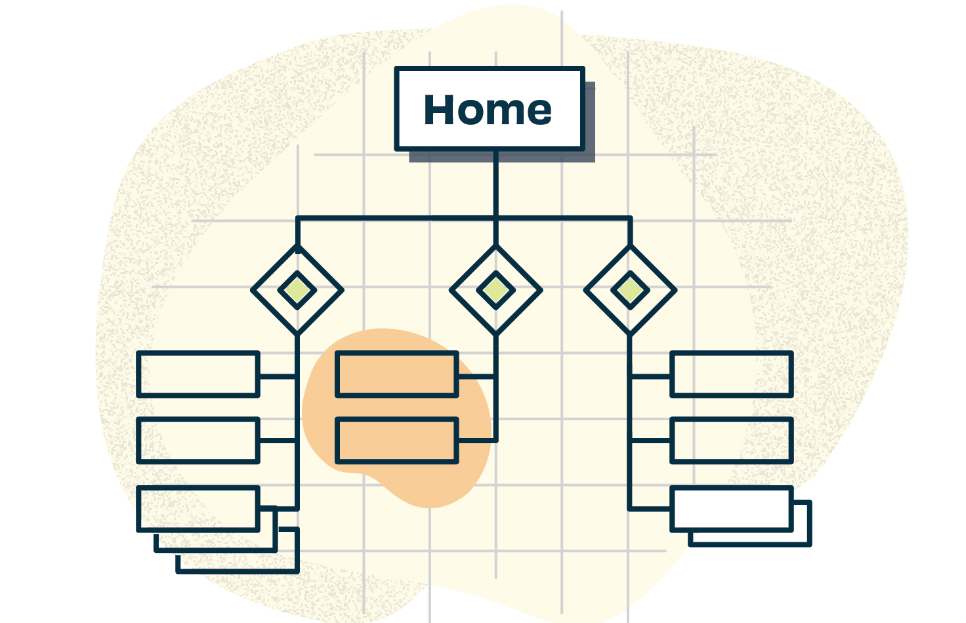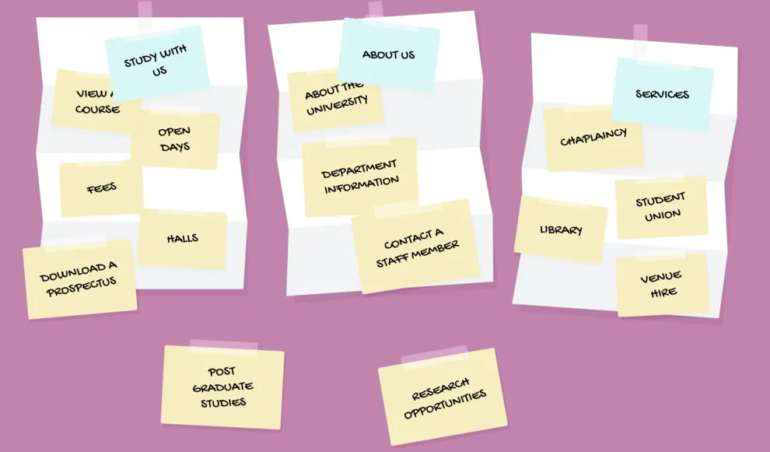Content is one of the most important parts of a website or app. Without it, no matter how “beautiful” the design, we have nothing to communicate to the user.
It’s one of the pillars that will allow us to build a good product… so we have to pay special attention to it.
This is where the term Information Architecture (IA) comes into play, a part of the UX design process that will help us start the project on the right footing.
Below I explain what Information Architecture is and how you can apply it to your projects.
Table of Contents
What is Information Architecture?
In a nutshell, information architecture is the art of organizing information as clearly and logically as possible.
This way the user can easily find what he is looking for. Moreover, it will also allow us to easily add new features and evolve the product.
We can make an analogy with construction: to have a good building you need an architect and that the foundations are well made, with a good base. If not, eventually cracks will appear and the building could collapse.
The same thing will happen with a digital product: if there are no well-defined paths, we will generate inconsistencies and inconsistencies, the user will be lost and it is very possible that he will not come back (and, moreover, it will be difficult for us to achieve our objectives, whether it is to sell, to have subscribers or to gain notoriety).
Information architecture to improve your user experience UX Design

It is a strategic reflection, to be carried out before the redesign or the creation of a digital interface.
The design and definition of the information architecture of the user experience (UX) Design of a website, or software, is essential to later be able to decline the screens with a coherent and relevant structure.
This reflection can be enriched with different members of a company’s teams (management, sales, development, etc.) or even with clients or prospects, during card classification workshops. These workshops will allow content to be categorized with different types of sensitivity and objectives. Combining these insights, stepping back and iterating, will produce the best possible information architecture and thus an optimized user experience.
How to define information architecture?

To do an IA exercise well, you basically need to focus on organizing, structuring, and labeling all the elements correctly.
All this without losing sight of the objective: to help the user find information and accomplish tasks.
These are the 3 steps:
- take inventory
- Group cards
- Set map
1. Take inventory
The first step is to identify everything we want to include in the project, based on the content and features we want to offer.
To decide what to include, we base ourselves on the research and insights we have obtained on users, but also on the current website or application (if it is a redesign), the requests or expectations of the client sponsoring the project, and what the competition is offering (benchmarking) and, of course, respecting deadlines and budget.
If the project is small, post-its of different colors can be used, although if we are talking about large platforms, Excel is the best, because it is more manageable.
2. Group the cards
The second step consists of establishing relationships between the inventoried elements, to decide which ones should be grouped in the architecture within the different sections or menus, and also within each page.
The key is figuring out where users expect to find items when browsing for a target.
For example, in an online store of furniture and home products, how will users prefer to navigate to find the products they are looking for?…
- … they will want to access by types of furniture (beds, tables, chairs, cabinets…)
- …by use and functions (rest, work, cook…)
- …per room (bedroom, living room, office, kitchen…)
- … by a seeker
- …or in all those ways?
A good technique for answering these questions is card sorting or conducting user interviews or surveys to understand how and why they use that particular product.
How to do a card sorting exercise?

If in the first step we have used cards, we can place them on a table and ask our users to order and group them as they see fit. It is surprising to see how sometimes his mentality completely differs from that of the client who commissions the project.
A few years ago I had to rethink the Volkswagen website and every time we carried out the exercise we were surprised by the results. We finally ended up finding common patterns that allowed us to group the content in the best possible way.
If you can sort users with cards, I recommend that you just use the paper cards, take a picture when the user is done, and screw them up for the next user to start over.
If you need to perform the exercise with hundreds of users or in different cities and countries, it is best to use UsabiliTest or even Trello.
3. Define the map
The third step is to reflect all the above data on a map. This will allow you to see the relationships and groupings that are established between the contents.
Sometimes it will be necessary to rename some categories or even allow access to a section from different categories.
This last part can be done using XMind, which makes mapping and brainstorming sessions a breeze 😉
If You really liked the information make sure to share your thoughts as well as share the information so as to benefit others too. Thank You
Other Reads:
What’s a good Homepage & 5 Tips to make an excellent Homepage?
How do I become a web designer in 2022?
Assistive Technology Service Provider Interface (ATSPI)
What are the 3 types of websites?






1 Comment
gralion torile
Thank you, I have just been searching for info about this subject for ages and yours is the greatest I’ve discovered till now. But, what about the conclusion? Are you sure about the source?